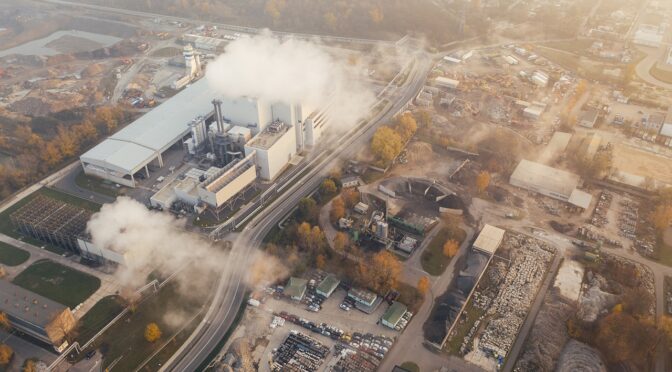
3 WAYS TO avoid the disastrous effects of climate change
The Emission Gap Reports of 2020 are out; once again predicting where the emissions will be in 2030 and what should be done to avoid the disastrous effects of climate change.
As expected there was a short-term decline in Carbon dioxide emission, a dip of 7 percent, due to the COVID-19 pandemic.
However this drop will only lead to a 0.01°C reduction of global warming by 2050. Even now, the world is heading for a temperature rise beyond 3°C.
What needs to be done for a net zero emission?
For a net zero emission, according to the Paris Agreement goals, we should be limiting the temperature below 2°C. And as far as possible keep the temperature below 1.5°C.
Why the rate of global warming is not dipping?
This is because of Nationally Determined Contributions (NDCs), The government pledges under the Paris Agreement, NDCs are not enough.
Where does India stand in GHG Emission?
India is the world’s fourth largest economy and fifth largest greenhouse gas (GHG) emitter, accounting for about 5% of global emissions. India’s emissions increased 65% between 1990 and 2005 and were projected to grow another 70% by 2020.
What are the levels of emission and their corresponding temperature?
In the Current policies scenario emissions are at 59 GtCO2e and at this rate the temperature will reach 3.5°C in 2050.
What happens with Conditional NDC scenario?
With Conditional NDC emissions need to fall to 53GtCO2e 3°C.
2.0°C range
Green pandemic recovery is within the range. Emissions need to fall to 41 GtCO2e.
A green pandemic recovery could cut up to 25 per cent off predicted 2030 greenhouse gas emissions. World is still heading for a temperature rise in excess of 3°C this century.
1.5°C range
Emissions need to fall to 25 GtCO2e’
How to achieve the ambitious 1.5°C goal?
- By combining a green pandemic recovery.
- New net-zero pledges that reflects in countries’ commitments under the Paris Agreement.
- And backed with rapid action.
What can we do to reduce GHG and tackle effects of climate change?
Household consumption accounts for around two-thirds of global greenhouse gas. Steps must be take to encourage reductions from households with high consumption emissions; and at the same time avoiding burdens on the poor.
Essential changes are in required in following areas:
- Passenger aviation
- Reductions in car use
- Domestic energy use
- Diet change
56% of Lifestyle Emissions consist of:
- Mobility : 17%
- Residential energy : 19%
- Food : 20%
Consumption emissions vary in different countries:
- United States of America: 17.6 tons CO2e per capita.
- European Union and the United Kingdom: together approximately 7.9 tons per capita.
- India:1.7 tons per capita.
There is a correlation between income and emissions:
- Top 10% of income earners are around 36–49% of the global total emissions.
- Lowest 50% of income earners account for around 7–15% of all emissions.
Carbon mitigation in mobility
Mobility has significant mitigation potential to reduce emissions.
- Reduction, at around 1.9 tCO2e per avoided long-haul return flight.
- Active travel such as cycling and walking can reduce emissions.
- Greater use of public transport.
- Greater vehicle efficiency.
- Adoption of BEVs.
The strong link between income and mobility emissions
- Global top 10% of income earners use around 45% of all energy for land transport and around 75% of all energy for aviation.
- Compared with 10% and 5% respectively for the poorest 50% of households.
(Mobility Lifestyle Decisions)
- Airport expansion plans in the UK legally rejected in their current form on climate grounds.
- Domestic Austrian flights replaced with intercity rail between Vienna and Salzburg.
- Incentives for bicycle purchase and repair – tax cuts for cycling in the EU and UK.
Carbon mitigation in residential sector
There is Ample mitigation potential in residential sector to reduce emissions:
- Low-carbon heating and renewable energy should be used by households.
- There should be energy-efficient construction and renovations.
- Emissions should be reduced through smaller living spaces.
- There should be adjustments to room temperature.
(Residential Lifestyle Change)
- Retrofitting public housing after economic downturn Improved residential energy efficiency in USA.
- Energy-efficiency standards for energy-intensive products in Japan.
- Smart meters reduced gas consumption by 22.0 per cent overall and by 27.2 per cent in high consumers in the UK.
Carbon mitigation in food sector
- Full or partial vegetarianism has the potential to reduce emissions from food consumption by around 31 per cent.
- Pescatarian diet leading to an approximately 27 per cent reduction.
- Reducing beef and lamb, and encouraging healthy fruit and vegetable consumption, can reduce food-related emissions by nearly 10 per cent globally.
(Diet Lifestyle Change)
- France implemented national policies against food waste in supermarkets.
- Food-growing households in Czech Republic reduce household emissions.
- Italy implemented a law to reduce food waste and encourage donation of leftover food to charity.
The focus of the global economy on paid employment – and the devaluation of unpaid care work that sustains it – is an overlooked barrier to low-carbon lifestyles.
The richer, the higher the emissions
- Higher income tends to be correlated with higher emissions.
- The richest 1% of the global population account for more emissions …… than the poorest 50%.
So how much time is left to avoid the disastrous effects of climate change?
It’s not too late to act
Emphasize emissions reduction from mobility, residential energy use and food, as these constitute key sectors through which lifestyle change can enable climate mitigation, comprising approximately 17 per cent, 19 per cent and 20 per cent of Lifestyle Emissions respectively.
Encourage Low-Carbon Lifestyles for mobility, residential energy use and food.









One thought on “3 WAYS TO avoid the disastrous effects of climate change”
Comments are closed.